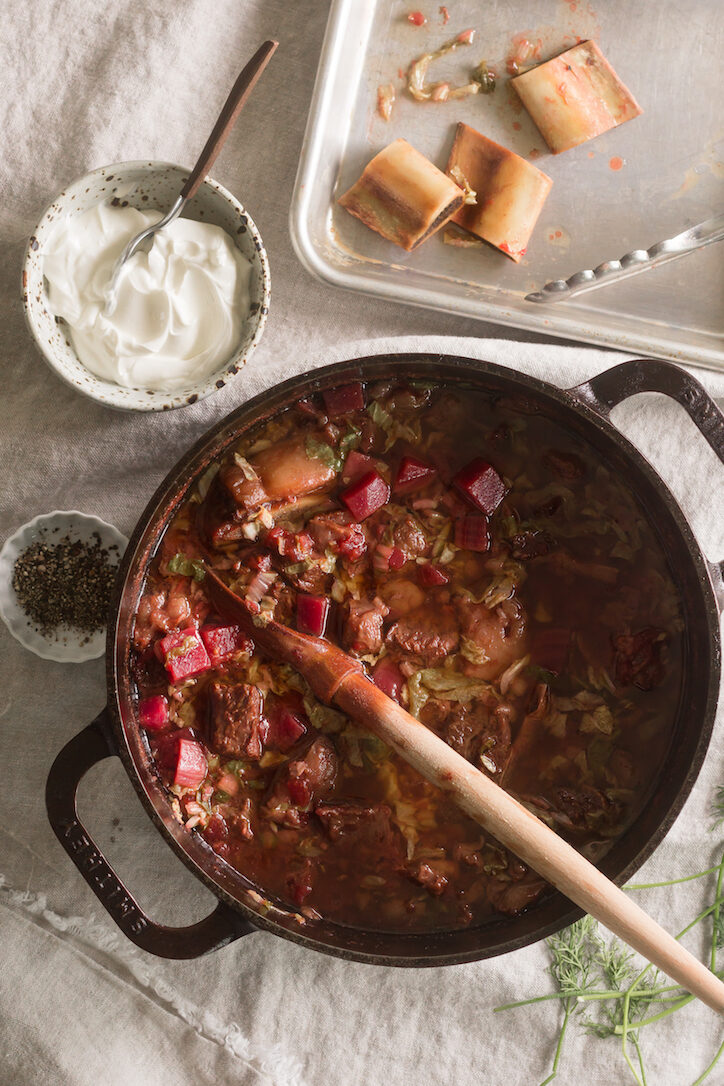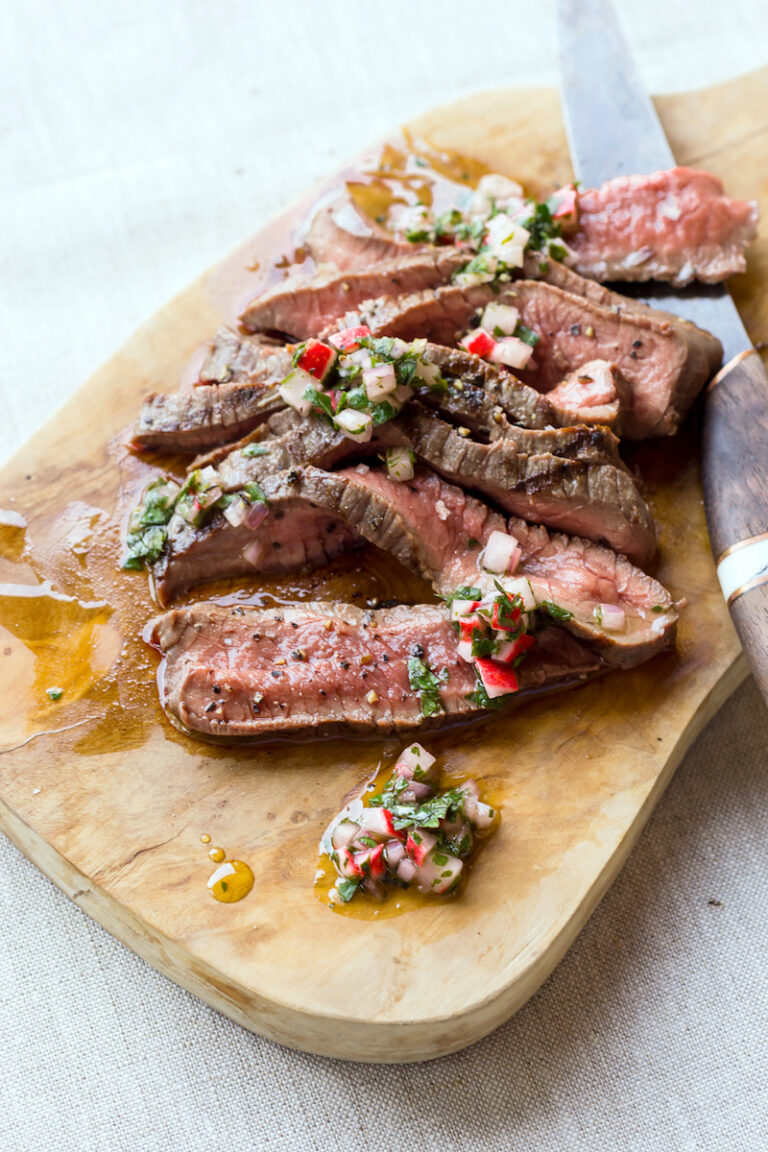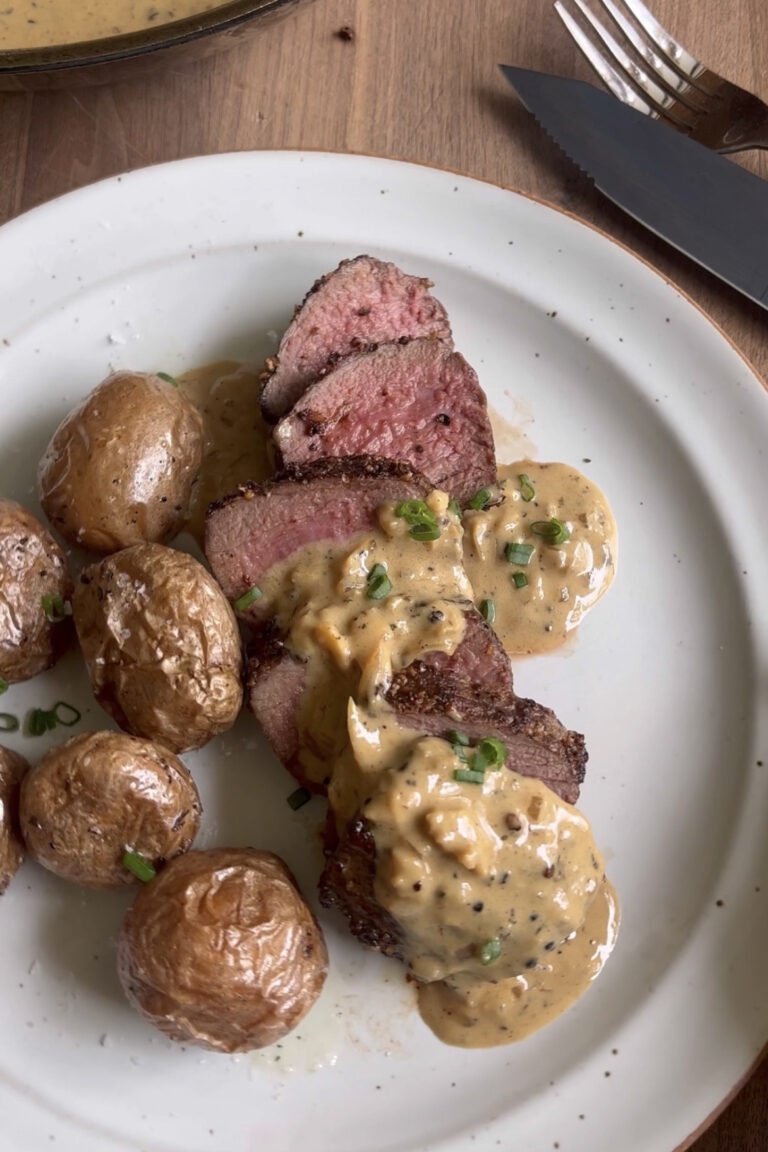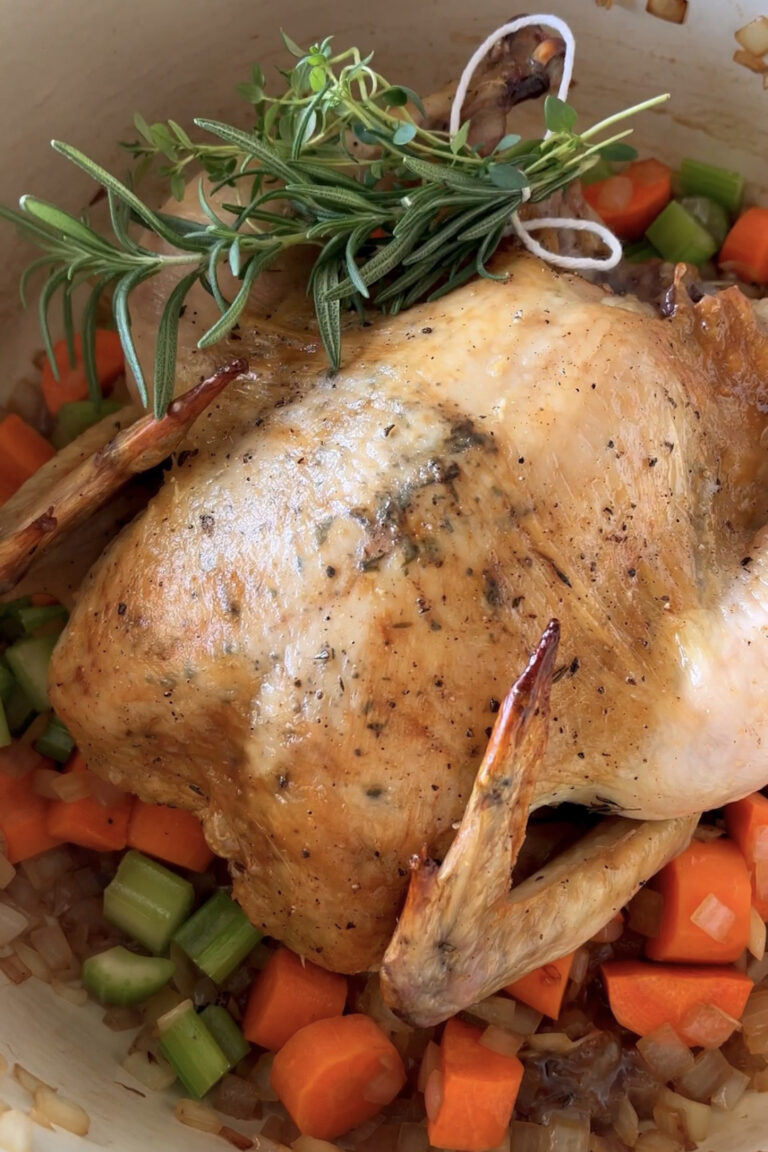BBQ Smoked Venison Top Round Roast

Easter is just around the corner, and when I think of Easter in Texas, I think of three things that I hold dear: Jesus, wildflowers, and barbecue. After church, we get together with family to enjoy smoked brisket, chicken, ribs, or beef tenderloin. It’s been an unspoken tradition for many years, and I love the pride and joy that goes into it. This year I decided to smoke a tender venison roast from an Axis buck. It’s seasoned with a homemade Texas-style BBQ rub that’s light on sugar and heavy on black pepper. It did not disappoint!
There are some challenges to smoking meat, particularly with wild game. To be successful, it helps to have a basic understanding of how smoking meat works. There are two different ways to go about it depending on the cut of meat you’re working with.
The first is a traditional smoke application to a very tough cut, like brisket. This type of muscle is interwoven with connective tissue made up of collagen, and in order to tenderize it, you need to convert it to gelatin. This won’t happen until the internal doneness of the meat reaches 180°F at a minimum (most people pull brisket at around 225°F or higher). When cooking, high heat will squeeze and contract muscle fibers and “wring” out their natural juices, so to mitigate excessive amounts of moisture loss, we smoke at low temperatures. And because we’re smoking a huge hunk of meat, it’s going to take a LONG time for it to reach 225°F internal doneness. This is why it takes hours to smoke a brisket and why you’ll always see it cooked well done. Of course, there are some other variables and things to know here, but you get the gist.
The other approach involves a much shorter smoke time for a tender cut, like a beef tenderloin. Here, the meat is already tender; it doesn’t need to reach 180°F to break down. So instead, we smoke until the meat hits our desired internal doneness, which is medium-rare, of course (130°F). Again, we use low temperatures to keep the meat juicy, but the overall smoke time is significantly less than a brisket. This recipe uses that second method and is intended for a large, tender roast. With venison, I like using the top (or inside) round found in the hindquarter, although it will work with the backstrap or sirloin tip. You can also use the bottom (or outside) round, but it isn’t quite as tender.
Now that we understand the basic principle of what we’re trying to achieve (and how), let’s take it one step further by integrating the reverse sear method. This means that instead of just throwing it on the smoker and pulling it right at 130°F when it’s done, we are going to pull it off 15-20 degrees early and sear it over a ripping hot cast iron with some beef tallow. The circulating smoke not only adds flavor, but it also dries the outermost layer, enabling you to get a beautiful, savory crust. It’ll make you drool.
The obvious challenge with smoking venison is that it is incredibly lean and can dry out very easily. If you’re worried about it being dry—don’t! The picture of the sliced smoked venison with juice pooled on top of the meat is proof enough that it can be incredibly juicy and delicious. It’s imperative that the temperature of the smoker is low, but it’s also really helpful to apply the dry rub several hours ahead of time to act as a dry brine. Salt has an osmotic effect and will help the meat retain juice when cooked (another lesson for another day, my food-nerd friends!)
I like serving this hot, but it’s also delicious chilled and then thinly sliced for sandwiches. You’re also going to want some traditional side dishes, like my spicy German potato salad, coleslaw, baked beans, and maybe even some mac-n-cheese.
Happy Easter and God Bless Texas!
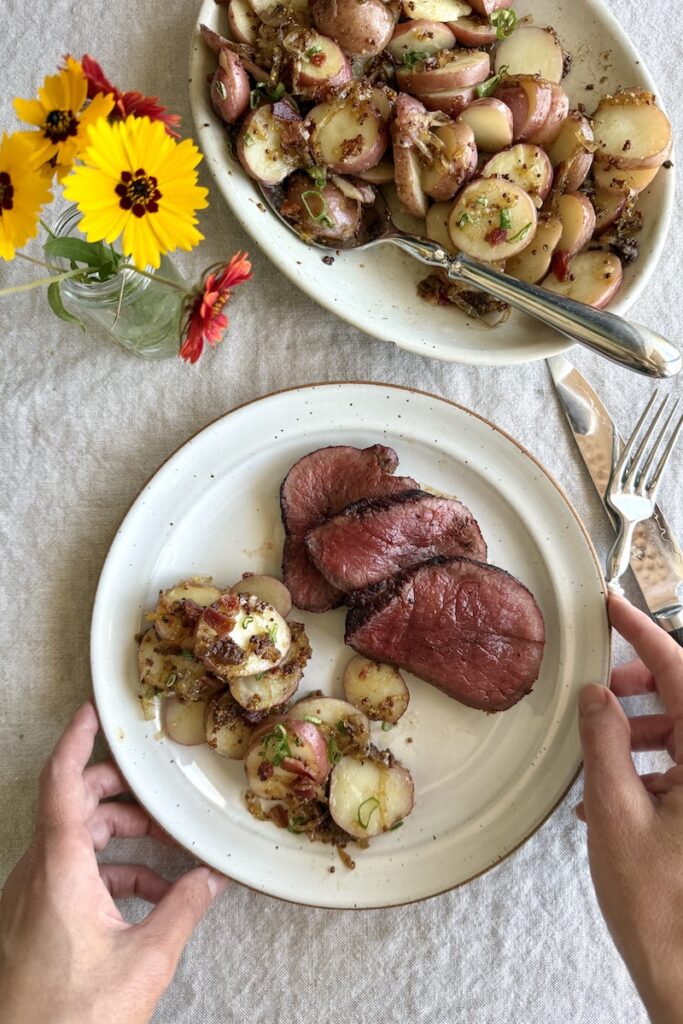
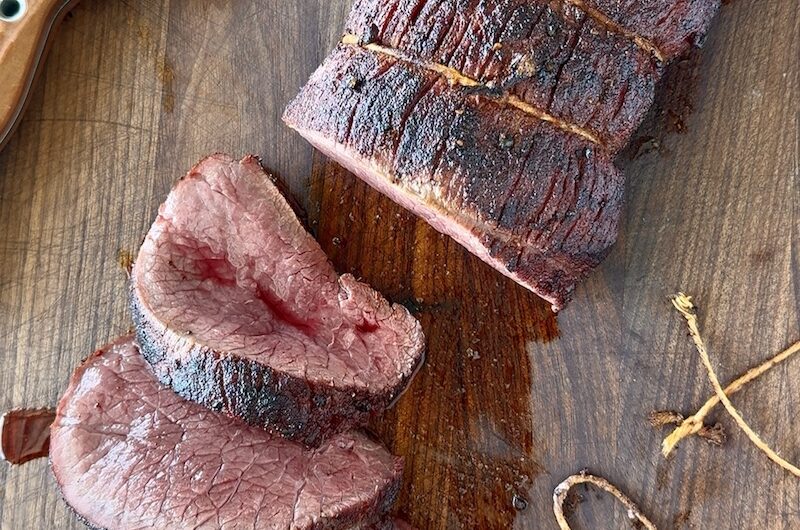
BBQ Smoked Venison Roast
Ingredients
2 lb. venison roast (see note)
BBQ Rub (recipe below; see note)
Beef Tallow for Searing- Texas-Style BBQ Rub
2 tablespoons coarse sea salt
2 teaspoons coarse ground peppercorns
4 teaspoons sweet smoked paprika
2 teaspoon ancho chile powder
1 teaspoon granulated garlic
1 teaspoon ground mustard
½ teaspoon brown sugar
Directions
- Trim any silverskin from the outside of the roast and generously season with the BBQ rub. Cover and refrigerate for at least 6 hours and up to 24. You can uncover it a few hours before cooking to dry the outside. Remove from the refrigerator an hour before smoking and pat very dry.
- Using butcher twine, truss the roast to give it an even shape so it cooks evenly. You can truss it like the professionals do using a butcher’s knot, but you can also cut several 10-12 inch-long pieces of twine and wrap them around the meat at 1-2 inch intervals, tying them off with a square knot. Place an oven-proof thermometer in the thickest part of the meat so that you can monitor the internal temperature as it cooks.
- Heat a smoker between 180°F and 200°F, using mesquite or oak wood. Smoke the roast until it reaches 110°F-115°F. Depending on the size of your roast (a white-tailed doe is significantly smaller than a mule deer buck!), this could take 30 minutes to 1 ½ hours. But generally, it will only take about an hour.
- Remove from the smoker and heat a large cast iron skillet over high heat. Once it’s ripping hot, add a big dollop of beef tallow, let it melt, and sear the meat on all sides for 3-4 minutes total. You can press into the meat with your tongs to feel the density as it cooks to check for doneness, much like a steak. You can also leave the meat thermometer in as you do this so you know when it’s done. Pull when the meat reaches 130°F. Transfer to a cutting board and allow it to rest for 5-10 minutes.
- Slice against the grain and serve immediately while warm, or allow it to completely cool and chill in the refrigerator for several hours and then slice it thinly for lunch meat. It’s easier to slice thin when it’s cold.
- Texas-Style BBQ Rub
- Stir together all the ingredients in a small bowl. Transfer to an airtight container in a cool spot for up to a year. Yields about 1/2 cup; you will not need all of the rub for this recipe.
Notes
- In my opinion, the best cut of meat to use is the top (inside) round found in the hindquarter. It’s a rectangular-shaped muscle with a long grainline. You can also use the loin (backstrap), sirloin tip, and the bottom (outside) round, although the last one is a little bit tougher. Of course, you can’t go wrong with using a beef tenderloin! The image shown is the top round from an axis buck weighing roughly 2 pounds, which will serve 4-6 people depending on how hungry you are. Bigger-bodied animals, like elk, will obviously serve more, and smaller-bodied animals, like pronghorn, are going to serve less. You can use a couple of different cuts from the deer and smoke a bunch at one time to serve a crowd or have leftovers for sandwiches.


